Elite Guitar Coaching Academy Blog
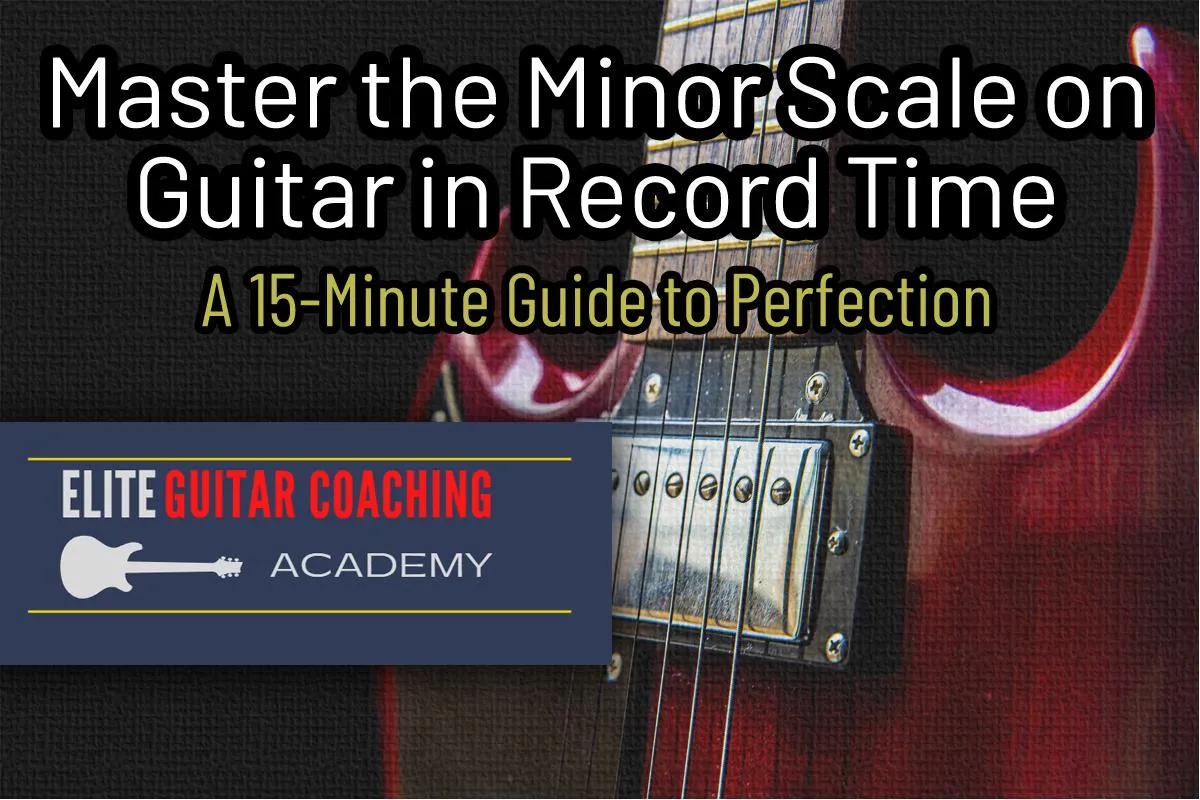
Master the Minor Scale on Guitar in Record Time: A 15-Minute Guide to Perfection
Learn everything about the minor scale on guitar in less than 15 minutes.
Hello there in guitarland!
In this lesson, we will cover the main characteristics of the minor scale on guitar and explain how it differs from the major scale. We will examine how the minor scale on guitar can be played on a guitar fretboard.
Before proceeding, it's advisable to have a basic understanding of the major scale, which can be obtained by reviewing the Major Scale: Patterns, Positions, and Theory lesson. Having that knowledge will enhance your understanding of this lesson.
Minor scale on guitar pattern
The minor scale on guitar has a melancholic and emotional tone, unlike the cheerful and bright major scale. Both scales are diatonic scales with 7 notes and an octave note.
The main difference between major and minor scales on guitar
The first key distinction between the two is in the 3rd degree of the scale. The major scale has a major 3rd, which is two whole steps from the root, while the minor scale has a minor or flattened 3rd that is 1 1/2 steps away from the root. The differences between the G major and G minor scales are demonstrated in the table.

The pattern for the natural minor scale on guitar is as follows:
Root
Major 2nd
Minor 3rd
Perfect 4th
Perfect 5th
Minor 6th
Minor 7th
It is important to note that this rule applies to all natural minor scales, including B minor, G minor, A minor, etc. The minor scale differs from the major scale in that it includes a lowered 3rd, 6th, and 7th interval.
Now, let’s move to:
The minor scale whole and half steps
Just like the major scale, the minor scale on guitar also follows a pattern of half and whole steps. The sequence is:
Whole Step – Half Step – Whole Step – Whole Step – Half Step – Whole Step – Whole Step
Let’s say we are in the key of G:
G to A is a whole step or 2 semitones (whole tone) G-G#-A
A to B♭ is a half step or 1 semitone A-B♭
B♭ to C is a whole step or 2 semitones B♭-B-C
C to D is a whole step or 2 semitones C-C#-D
D to E♭ is a half step or 1 semitone D-E♭
E♭ to F is a whole step or 2 semitones E♭- E – F
F to G is a whole step or 2 semitones F – F# – G
To build a minor scale on guitar in any key, you can use the above formula. For example, if you start with the root note at E and follow the same pattern of whole and half steps, you would get the E minor scale.
It is crucial to understand the root note positions for each scale shape.
Minor scale on guitar: patterns on the fretboard
The individual notes that form guitar scales can be found throughout the fretboard, but they can be organized into recognizable patterns, which makes them simpler to learn. Here, we will examine the five positions of the CAGED system's minor scale on guitar. Each diagram features the scale's interval details, recommended fingerings for each note in the position, and emphasizes the root note locations for each position.
WARNING: It is crucial to understand the root note positions for each scale shape. This will serve as a reference point to help you familiarize yourself with each scale position and be able to quickly identify and find any scale position on the fretboard.
So, are you ready? Let’s start with the first position:
Minor scale on guitar: 1st Position
The root notes in this position can be found on strings 6, 4, and 1 and this illustration is for the G minor scale, but the root note placement remains the same for all minor scales, including A minor, E minor, etc.
Begin playing the G note on the 6th string, ascending and descending across the fretboard. As a beginner, start and finish with the lowest root note to train your ear for the correct sound of the scale.
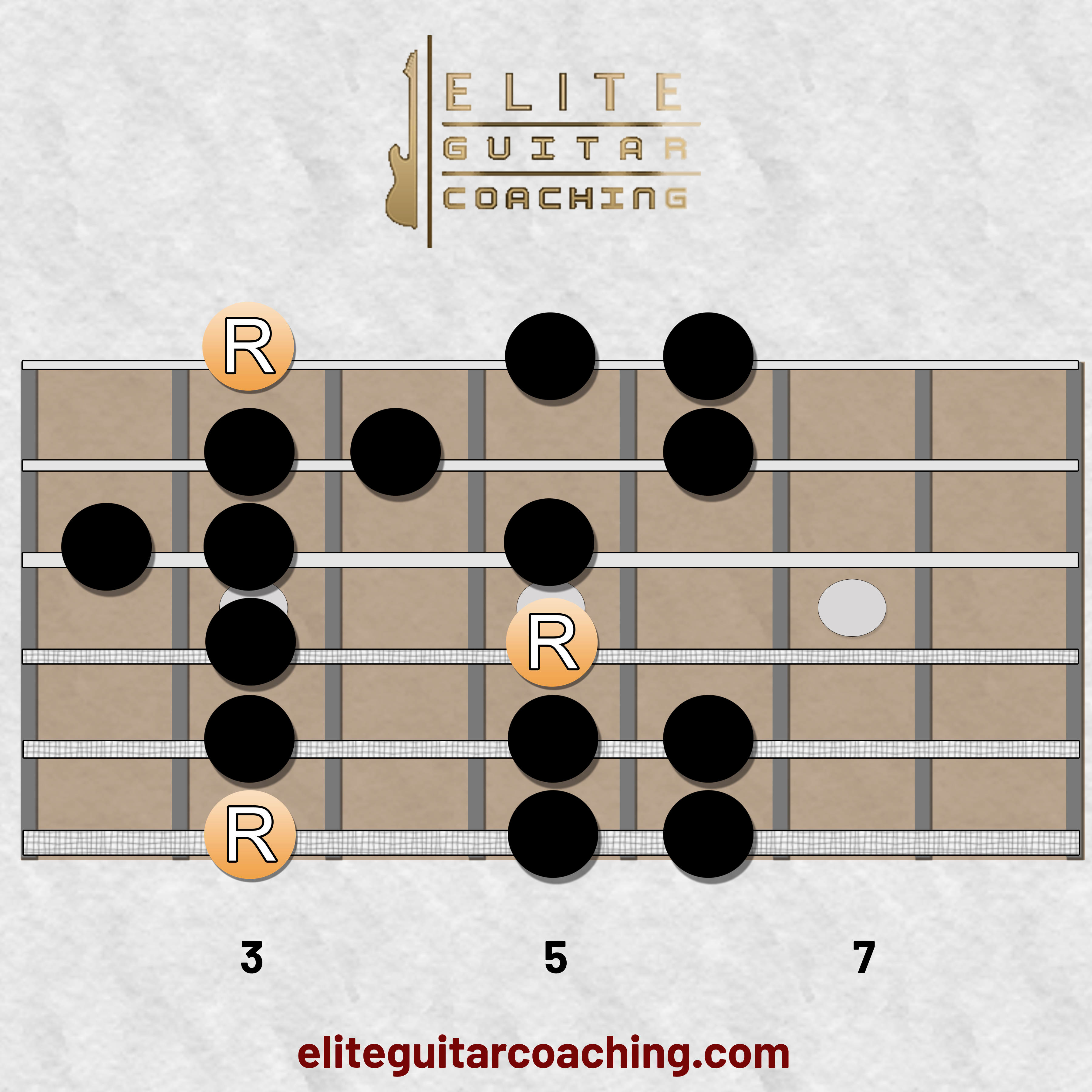
Minor scale on guitar: 2nd Position
Start the pattern with the root note on string 4 and move through the scale by playing each note ascending and descending across the fretboard, making sure to play all notes in that position.
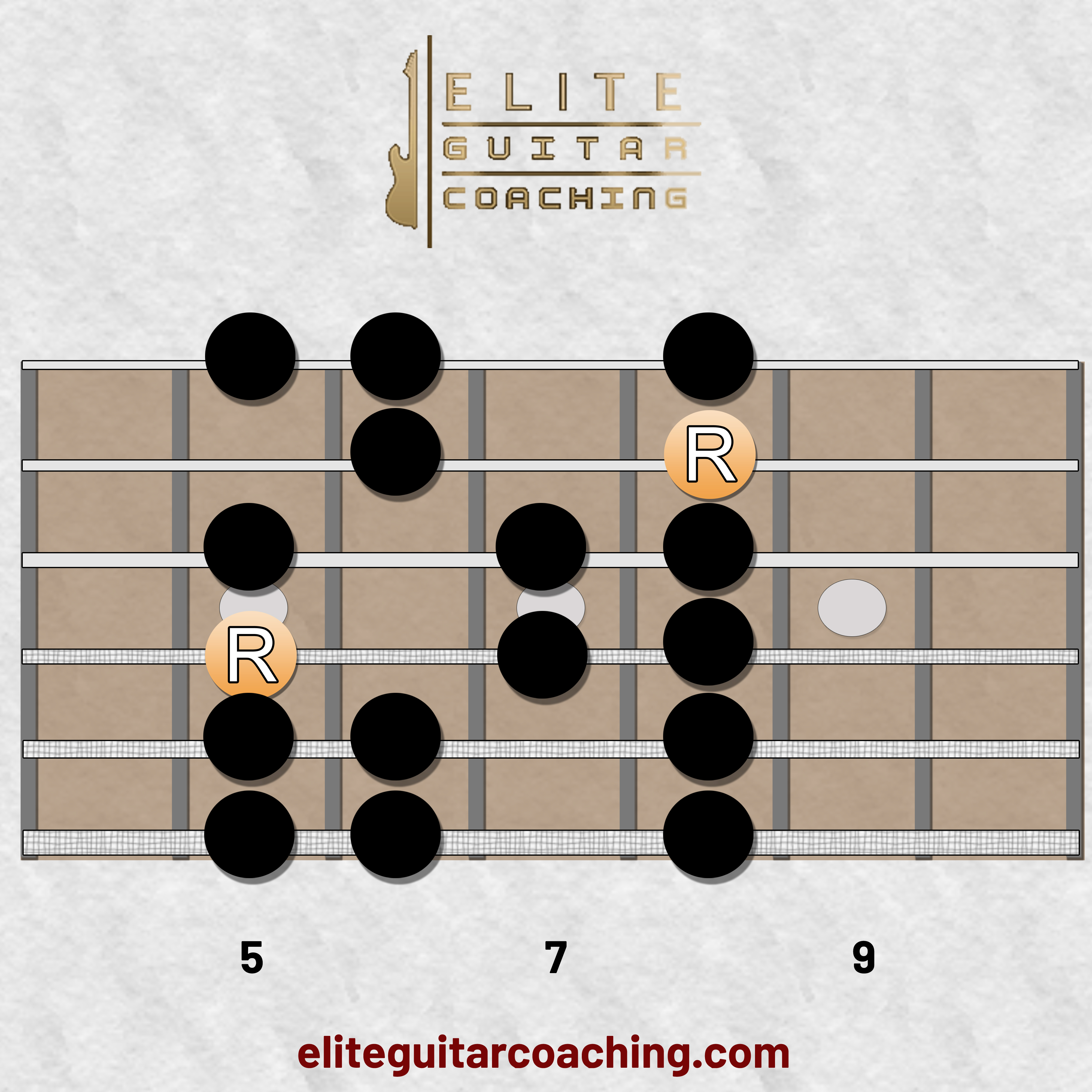
Minor scale on guitar: 3rd Position
Begin playing the pattern from the root note on string 5 and work through all the notes.
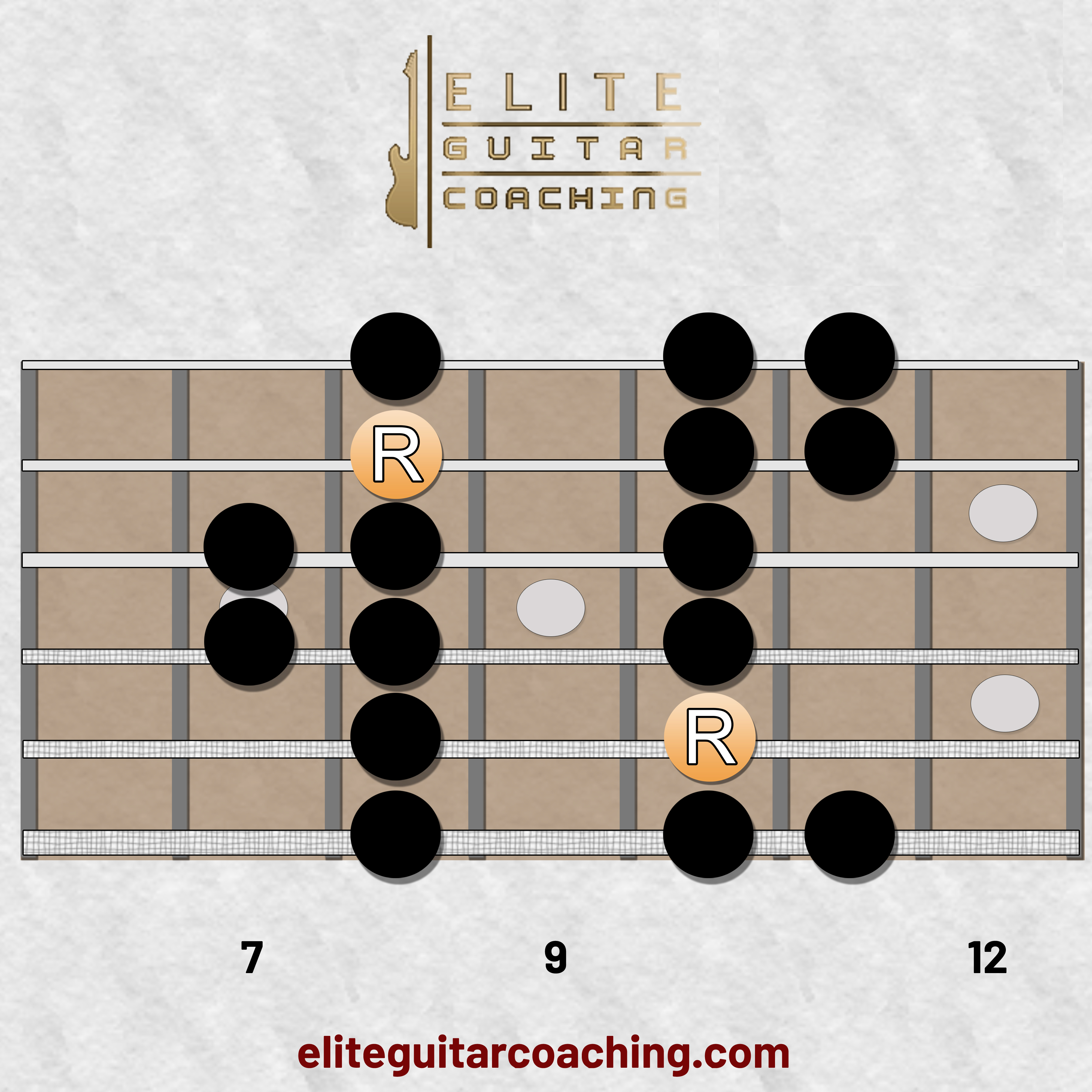
Minor scale on guitar: 4th Position
In position 4, the root notes are located on strings 5 and 3. Start playing from the root note on the 5th string.
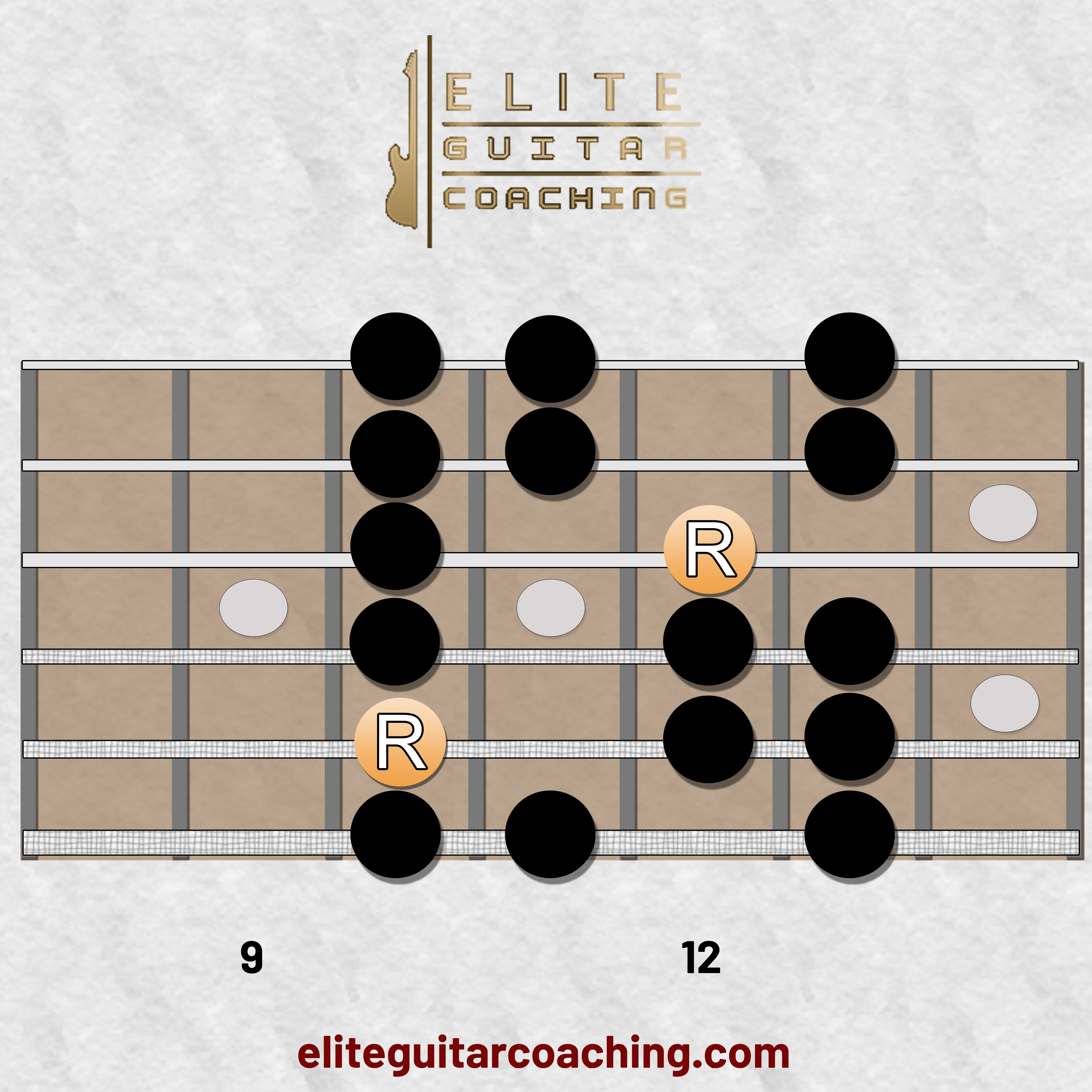
Minor scale on guitar: 5th Position
Position 5 is unique as it's the only one with three root notes, which are located on strings 6, 3, and 1. Start playing the pattern from the root note on the 6th string and work through all the notes.

How to link shapes to the minor scale on guitar?
Did you notice it? If you paid close attention to each scale position, you might have noticed a connection between one position and the one next to it. The scale positions are NOT standalone, but instead, they are linked between each position through shared notes.
The connection is between:
Position 1&2
Position 2&3
Position 3&4
Position 4&5
Position 5&1 (after the 5th, the scale starts all over from the beginning)
These can apply to any minor scale on guitar fretboard and there is no exception. By understanding the root note positions and interval relationships for one minor scale on guitar, such as G minor, you have also learned it for all other minor scales. So, you can go from one scale to another key pretty straightforwardly, simply by changing the root note that the pattern is based on.
Congratulations on mastering the minor scale on guitar! Ready to take your skills to the next level? Discover how to structure your practice schedule for maximum results.
I hope this was helpful. If you’re interested in developing your guitar skills and reaching your music goals, please check the different Elite Guitar Coaching Academy packages and how you can get private coaching from me.
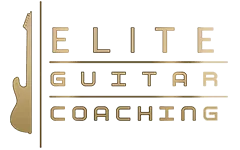
© Copyright - Elite Guitar Coaching Academy. All Rights Reserved - Privacy Policy - Earnings Disclaimer - Terms & Conditions
Earnings and income representations made by Elite Guitar Coaching Academy, eliteguitarcoaching.com, are aspirational statements only of your earnings potential. The success of Elite Guitar Coaching Academy testimonials and other examples used are exceptional, non-typical results and are not intended to be and are not a guarantee that you or others will achieve the same results. Individual results will always vary and yours will depend entirely on your individual capacity, work ethic, business skills and experience, level of motivation, diligence in sticking to Elite Guitar Coaching Academy's guidance and strategies, the economy, the normal and unforeseen risks of doing business, and other factors.
Elite Guitar Coaching Academy, and eliteguitarcoaching.com individually, are not responsible for your actions. You are solely responsible for your own moves and decisions and the evaluation and use of our products and services should be based on your own due diligence. You agree that Elite Guitar Coaching Academy is not liable to you in any way for your results in using our products and services. See our Terms & Conditions for our full disclaimer of liability and other restrictions.
Do you have questions? Are you wondering if this will work for you? Email us at info@mg.eliteguitarcoaching.com
We will be happy to discuss your goals and how our courses, coaching or consulting services may help you. Thank you.

